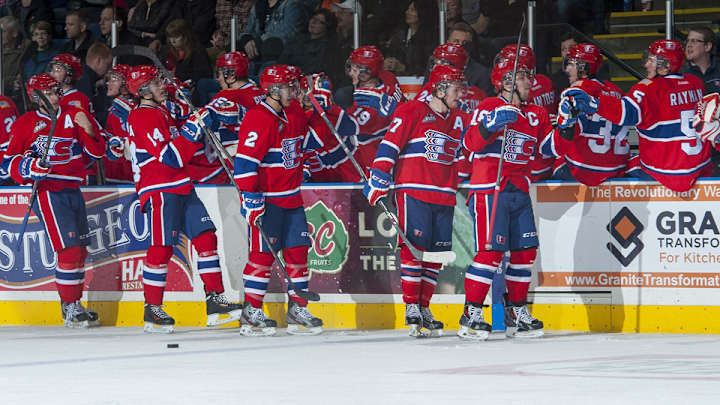Report: Washington expands child labor investigation into WHL

The Western Hockey League and four of its member teams are facing an expanded investigation into the reported violation of child labor laws.
The league and four Washington-based teams -- Everett, Seattle, Spokane and Tri-Cities -- were advised earlier this week that an already year-long investigation by the state's Department of Labor and Industries would broaden its scope and that three staffers had been assigned to the case.
According to TSN's Rick Westhead, the investigators will conduct in-person interviews with WHL players and team staff and ask for written documentation in the coming months to see if there has been a violation of the industrial welfare act.
NHL Roundtable: Risers and sliders, how to fix the Flyers, the Brodeur saga
At issue is whether the players are classified as employees or something else. Players can be paid as little as $50 per week as opposed to the minimum wage of approximately $370, but teams also provide room and board, training, equipment and a promise of one year's worth of university tuition for each season spent in the CHL.
Unifor, a 300,000-member union based in Canada seeking to to organize junior players in that country in order to get them paid according to minimum wage laws. The Canadian Hockey League, an umbrella group that includes the WHL, argues that its players are student-athletes honing their skills in a developmental league and thus are not employees.
While they've had success with this position in the past, this investigation could not only challenge that stance but lead to civil or criminal charges against the league and member teams.
• Roundtable: Which teams are still within reach of the playoffs?
It could also bring about the end of several small-market teams across the league. If required to pay minimum wage last season, a team like the WHL's Prince Albert Raiders would have finished $150,000 in the red. The Moose Jaw Warriors would have lost $170,000. The Lethbridge Hurricanes would have been more than $450,000 in the hole. And with 13 of 18 QMJHL clubs reporting average attendances below 3,000 per game, it's possible the league would be reduced by more than half.
That could be devastating to the NHL and its development model. There were 427 CHL grads on opening day rosters this season, accounting for more than 55% of all NHL players.
